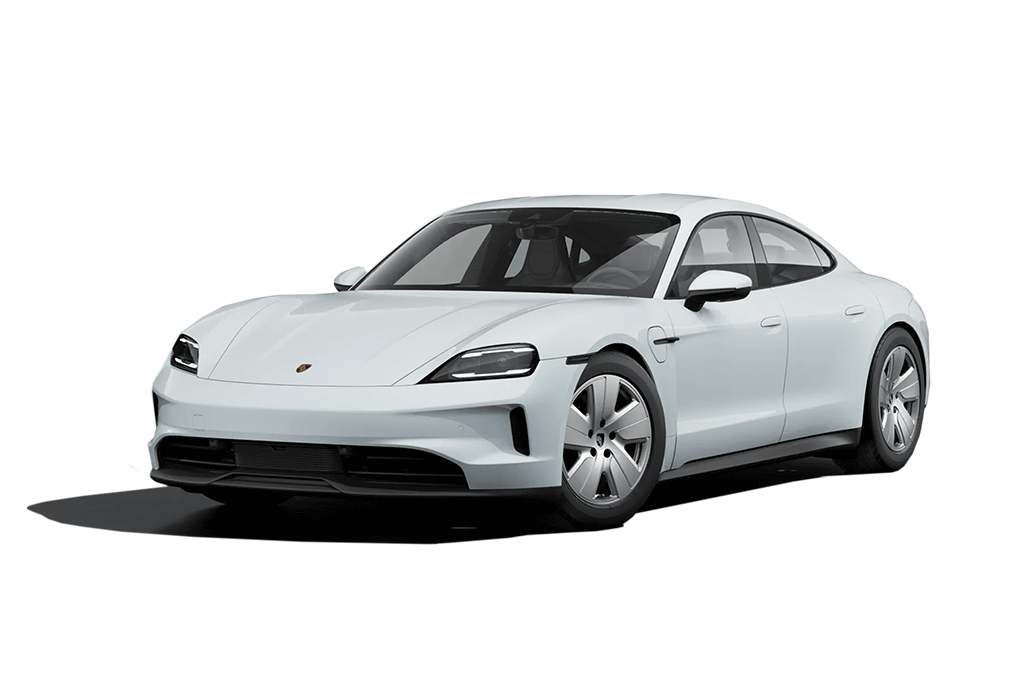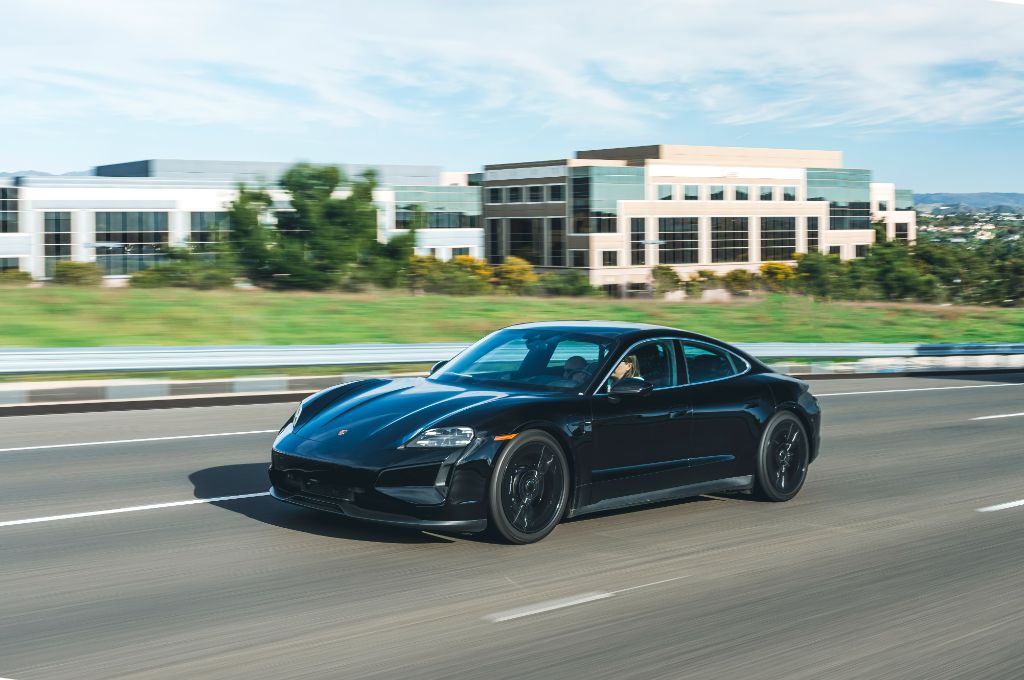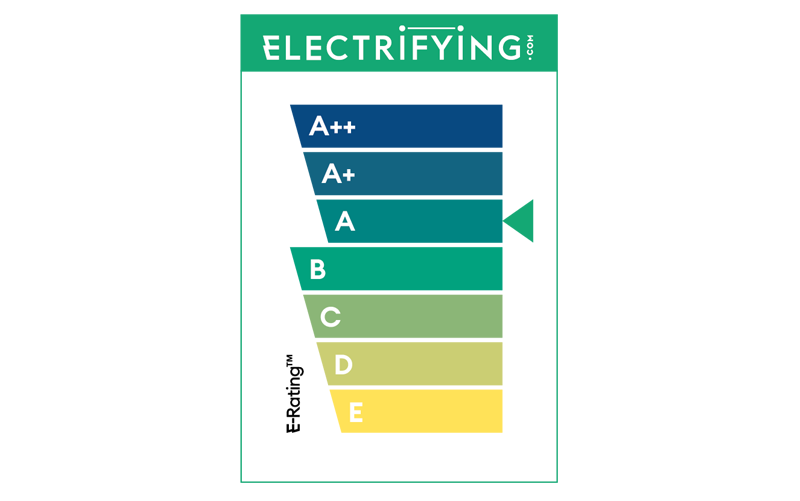The Taycan saloon, Sport Turismo and Cross Turismo will all launch later in spring 2024, and have been updated to better suit long distance drivers, with charging speeds and range potential both improved.
That’s not all been a result of more battery capacity, though. A more aerodynamic wheel, the ability in four-wheel drive models to de-couple the front axle, weight savings, improved brake recuperation and more, have all played a part in the 2024 Taycan’s improvements.
Range, Battery & Charging
This is where the big changes have happened. The Taycan now gets a bigger battery – up from 79 to 89kWh in standard model, while the bigger Performance Battery Plus (which is standard on most higher-spec Taycans) goes up from 93 to 105kWh. Usable capacities for the 2024 Porsche Taycan are now 82.3- and 97kWh respectively.
That means a jump in WLTP official range from 259 miles to 367 miles for the smaller battery cars, while the bigger battery now manages 421 miles. Or, to be more precise, depending on what model and wheel size you go for, official range is now between 313- and 367 miles on the standard car, and 360- and 421 miles for the bigger battery.
That’s a very useful improvement on the pre-facelift Porsche Taycan, and is now much more like the range that many Taycan buyers want, even if the Mercedes EQS still goes further.
Charging is also improved, with speeds raised from 270kW to 320kW, so that the 10-80% charge now takes as little as 18 minutes courtesy of the car’s 800V charging system, provided you’re charging at a powerful enough ultra-rapid charger. This update also brings an overhauled thermal management system, which should make the Taycan more efficient in winter conditions, and the charger search software has been updated so that you can see how many chargers are in use at any given location.
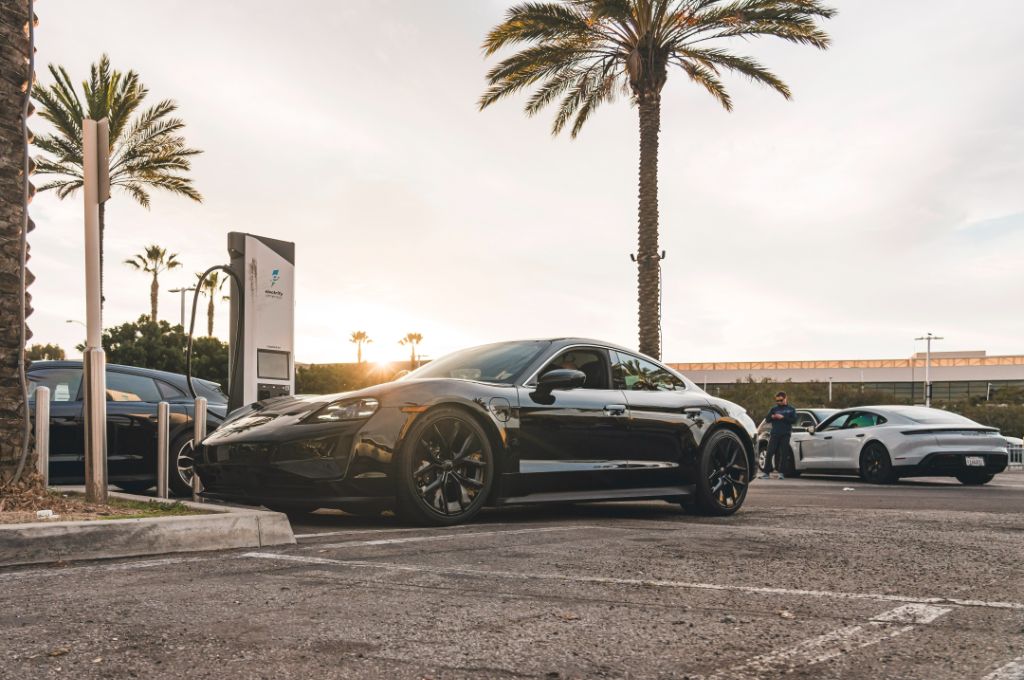
Practicality & Boot Space
This hasn’t changed for this facelift, so the Porsche Taycan will still be offered in sleek saloon form, or in fastback Sport Turismo and slightly ruggedised Cross Turismo guises. It won’t be the very spacious, versatile family car that a Tesla Model Y, BMW iX or Mercedes EQE SUV will be, but there’s still room enough for four adults and a useful amount of luggage, so don’t discount it if you’re considering the Porsche and have kids to ferry about – especially if you’re going for the more practical Sport- or Cross Turismo models that we favour.
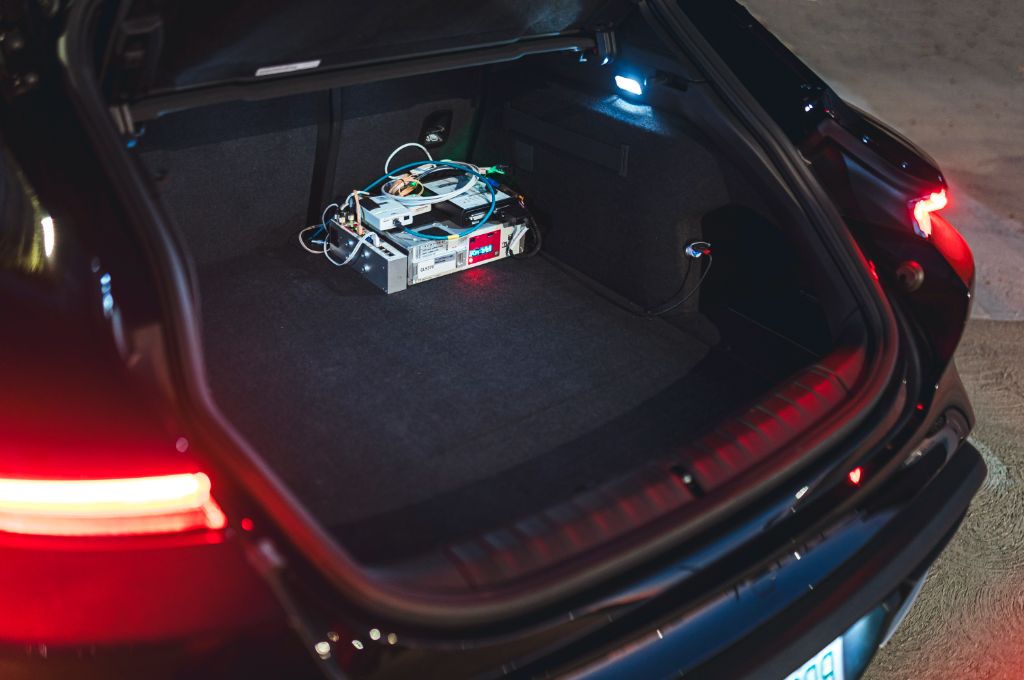
Interior, Design/Styling & Technology
The Porsche’s interior still feels superbly finished, as it ever had. Those models with the optional Sport Chrono pack, or with the Performance Battery Plus, now get a ‘press-to-pass’ button on the steering wheel, which gives a boost of 94bhp for ten seconds. Other changes include a screen for the front passenger, which can stream your favourite movies and telly programmes, should you so wish. The finish and design of the Taycan’s interior remains a huge selling point.
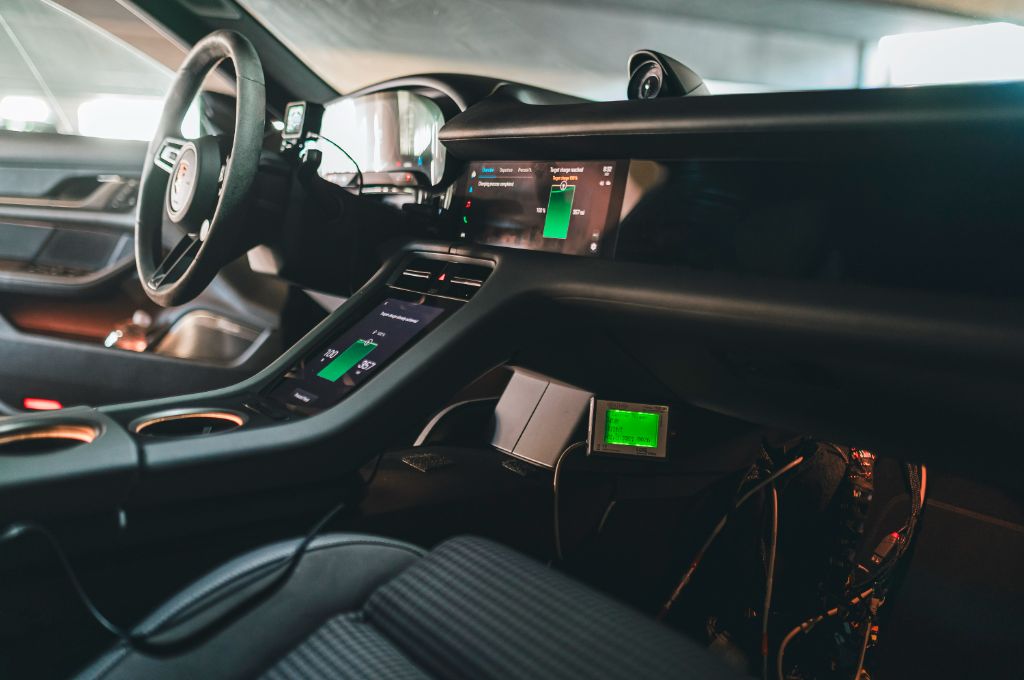
Motors, Performance & Handling
Our test in a Porsche Taycan 4S took in a route travelling all the way from Los Angeles, south on Interstate 5, along the Mexican border, through San Diego and back for a charge just outside Elon Musk’s HQ. It meant that we covered just over 300 miles, before plugging into Electrify America’s hypercharger – which actually bettered Porsche’s estimates and managed an 8% to 80% charge in 16 minutes, so we know that the car can breeze through these sort of charging speeds when the charger is up to it.
Along the way, I can’t say that I was tempted to make full use of the additional performance that the Taycan now gets. New, lighter and more efficient electric motors have also brought additional power to much of the Taycan range, with the 4S that we’re driving now boosted to 590bhp (67bhp over the pre-facelift version), and with 0-62mph down to 3.7sec. It was hardly slow in the first place, and while the additional pace is impressive, I stick to more moderate road speeds for our trip. The Turbo S gets an even bigger boost, and now has 939bhp; good for 0-62mph in 2.4sec despite a 393 mile WLTP range, which are some impressive headline figures that are knocking on the door of the Tesla Model S Plaid.
Even so, the Taycan now gets adaptive air suspension as standard, or can be ordered with ‘Porsche Active Ride’ suspension in the four-wheel drive models for what Porsche describes as ‘an unprecedented bandwidth between comfort and driving dynamics.’ Our car certainly handled the long drive well, and proved a great, and efficient tourer, while still remaining one of the finest-handling electric cars out there.
Running Costs & Pricing
The Porsche Taycan range starts at £86,500, while the 4S that we drove (and that’s likely to be a popular choice in the UK for a lot of Taycan buyers) comes in at just under £96,000. The range goes right up to over £161,000 for the Turbo S.
Equipment has been improved for this facelift, not only with the adaptive air suspension but with features like extended ambient lighting, reversing camera and power folding mirrors now included (as you’d expect for a car of this price).
You’ll still probably want to add some cheeky extras, and while it’s not cheap by any standard, for the performance and handling, range and tech that it delivers, the Taycan won’t leave you feeling short-changed.
Verdict
Porsche has learned its lesson. After being at the forefront with the Taycan four years ago, and then seeing the competition gradually catch up and overtake it in certain areas, it has now fine-tuned it back into pole position on Electric Avenue. This means that the Taycan not only stands up to the Tesla Model S and Lucid Air, but it also solidifies Porsche’s position as a leader in electrification – and a benchmark when it comes to making battery cars for car enthusiasts. It did need this update for that improved range, but with it this remains one of our favourite electric cars of all. It bodes very well, indeed, for the forthcoming electric Porsche Macan…









